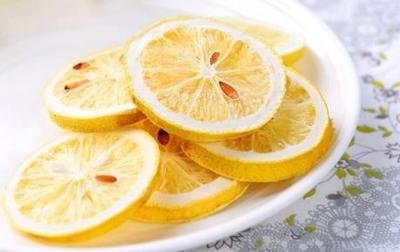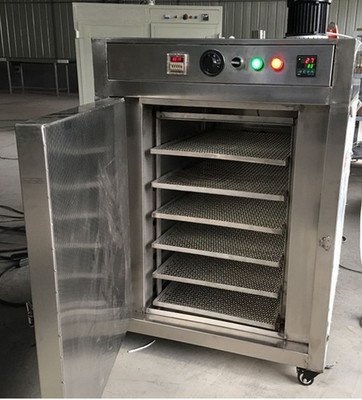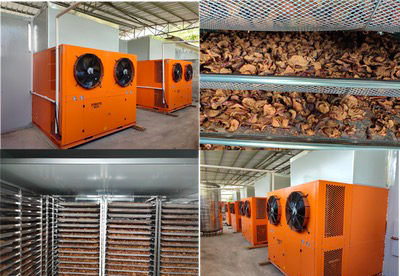
Content Menu
● Understanding Heat Pump Dryers
>> How Heat Pump Dryers Work
● Power Requirements for Heat Pump Dryers
>> Typical Power Consumption
● Advantages of Using Heat Pump Dryers
● Factors Affecting Power Requirements
● Choosing the Right Heat Pump Dryer
● Installation Considerations
● Operational Tips for Maximizing Efficiency
● Applications of Heat Pump Dryers in Food Processing
● Comparative Analysis with Other Drying Technologies
● Conclusion
● FAQ
>> 1. What is a heat pump dryer?
>> 2. How much power does a typical heat pump dryer consume?
>> 3. Are heat pump dryers energy-efficient?
>> 4. Can I use a heat pump dryer for other products besides food?
>> 5. What maintenance do heat pump dryers require?
Heat pump dryers have gained popularity in recent years due to their energy efficiency and effectiveness in drying various products, including food. Understanding the power requirements for these machines is crucial for manufacturers, suppliers, and users alike. This article will delve into the workings of heat pump dryers, their power requirements, and the benefits they offer, especially in the context of food drying.

Understanding Heat Pump Dryers
Heat pump dryers operate on a simple yet effective principle: they use a refrigeration cycle to extract moisture from products. Unlike traditional dryers that generate heat through electric coils or gas burners, heat pump dryers recycle heat, making them more energy-efficient.
How Heat Pump Dryers Work
1. Moisture Absorption: The dryer draws in humid air from the drying chamber.
2. Heat Exchange: The humid air passes over a heat exchanger, where it is heated by a refrigerant that absorbs heat from the surroundings.
3. Condensation: As the air cools, moisture condenses into water and is collected in a tank or drained away.
4. Recycling Air: The now-dry air is reheated and recirculated back into the chamber to continue the drying process.
This cycle allows heat pump dryers to operate at lower temperatures while effectively removing moisture from food products.
Power Requirements for Heat Pump Dryers
The power requirements for a heat pump dryer can vary significantly based on several factors:
- Size of the Dryer: Larger dryers require more power to operate efficiently.
- Type of Product Being Dried: Different foods have varying moisture content and drying times, impacting energy consumption.
- Ambient Temperature: The efficiency of heat pump dryers can decrease in colder environments, leading to higher energy use.
Typical Power Consumption
On average, heat pump dryers consume between 1.5 kW to 5 kW per hour of operation. However, this can vary based on the model and its specifications. Here's a breakdown of power consumption based on dryer sizes:
| Dryer Size | Power Consumption (kW) | Typical Use Case |
| Small | 1.5 - 2.5 | Home use |
| Medium | 2.5 - 4 | Small businesses |
| Large | 4 - 5 | Industrial use |
Advantages of Using Heat Pump Dryers
Heat pump dryers offer several advantages over traditional drying methods:
- Energy Efficiency: They use significantly less energy than conventional dryers due to their recycling system.
- Lower Operating Temperatures: This is particularly beneficial for drying sensitive food products that may degrade at high temperatures.
- Reduced Environmental Impact: Lower energy consumption translates to reduced greenhouse gas emissions.
- Versatility: Heat pump dryers can be used for various applications beyond food, including textiles and pharmaceuticals.

Factors Affecting Power Requirements
Several factors can influence the power requirements of heat pump dryers:
1. Drying Time: Longer drying times mean more energy consumption.
2. Moisture Content: Foods with higher moisture content will require more energy to dry effectively.
3. Airflow Design: Efficient airflow within the dryer can reduce power needs by ensuring even drying.
4. Heat Recovery Efficiency: The better the heat recovery system, the less power will be needed for heating.
5. Insulation Quality: Well-insulated dryers maintain temperature more effectively, reducing energy consumption during operation.
Choosing the Right Heat Pump Dryer
When selecting a heat pump dryer for food processing, consider the following:
- Capacity Needs: Assess how much product you need to dry at once.
- Energy Efficiency Ratings: Look for models with high energy efficiency ratings to minimize operational costs.
- Maintenance Requirements: Some models may require more maintenance than others; choose one that fits your operational capabilities.
- Cost vs. Benefit Analysis: While initial costs may be higher, consider long-term savings on energy bills.
Installation Considerations
Proper installation is crucial for optimizing the performance of a heat pump dryer:
- Location: Choose a location with adequate ventilation and temperature control.
- Electrical Requirements: Ensure that your electrical supply meets the dryer's power needs.
- Drainage System: If your model has a water collection system, ensure proper drainage is available.
- Space Requirements: Ensure there is enough space around the dryer for airflow and maintenance access.
Operational Tips for Maximizing Efficiency
To get the most out of your heat pump dryer:
- Pre-treat food items to reduce moisture content before drying.
- Regularly clean filters and condensate tanks to maintain airflow and efficiency.
- Monitor temperature and humidity levels within the drying chamber for optimal performance.
- Schedule regular maintenance checks to ensure all components are functioning correctly.
Applications of Heat Pump Dryers in Food Processing
Heat pump dryers are widely used in various sectors of food processing due to their ability to preserve quality while effectively removing moisture. Some common applications include:
- Fruits and Vegetables: Heat pump dryers are ideal for dehydrating fruits and vegetables while retaining their nutritional value and flavor.
- Meat Products: They are used in jerky production, where controlled drying helps prevent spoilage while enhancing flavor profiles.
- Herbs and Spices: These dryers help maintain the essential oils in herbs and spices during the drying process, preserving their potency.
- Grains and Cereals: Heat pump technology can also be applied to dry grains efficiently without compromising quality.
Comparative Analysis with Other Drying Technologies
When considering different drying technologies, it's essential to understand how heat pump dryers compare with others such as conventional electric or gas dryers:
| Feature | Heat Pump Dryer | Conventional Dryer |
| Energy Efficiency | High | Moderate |
| Operating Temperature | Low | High |
| Moisture Removal Capability | Excellent | Good |
| Environmental Impact | Low | High |
| Initial Cost | Higher | Lower |
This table illustrates that while heat pump dryers may have a higher initial cost, their long-term savings on energy bills make them an attractive option for many businesses in food processing.
Conclusion
Heat pump dryers are an excellent investment for food manufacturers looking to enhance their drying processes while minimizing energy consumption. Understanding their power requirements helps in selecting the right model and optimizing operational efficiency. By considering factors such as size, product type, installation requirements, and maintenance tips, businesses can maximize their return on investment while contributing positively to environmental sustainability.
As technology continues to advance, we can expect further improvements in efficiency and effectiveness from heat pump dryers, making them an even more compelling choice for food processing industries worldwide.

FAQ
1. What is a heat pump dryer?
A heat pump dryer is an appliance that uses a refrigeration cycle to dry products by recycling heat rather than generating it through traditional means like electric coils or gas burners.
2. How much power does a typical heat pump dryer consume?
Typical power consumption ranges from 1.5 kW to 5 kW per hour depending on factors such as size and type of product being dried.
3. Are heat pump dryers energy-efficient?
Yes, they are generally more energy-efficient than traditional dryers because they recycle heat and operate at lower temperatures.
4. Can I use a heat pump dryer for other products besides food?
Absolutely! Heat pump dryers are versatile and can be used for textiles, pharmaceuticals, and other applications requiring moisture removal.
5. What maintenance do heat pump dryers require?
Regular maintenance includes cleaning filters, checking drainage systems, and monitoring airflow to ensure optimal performance and efficiency.












